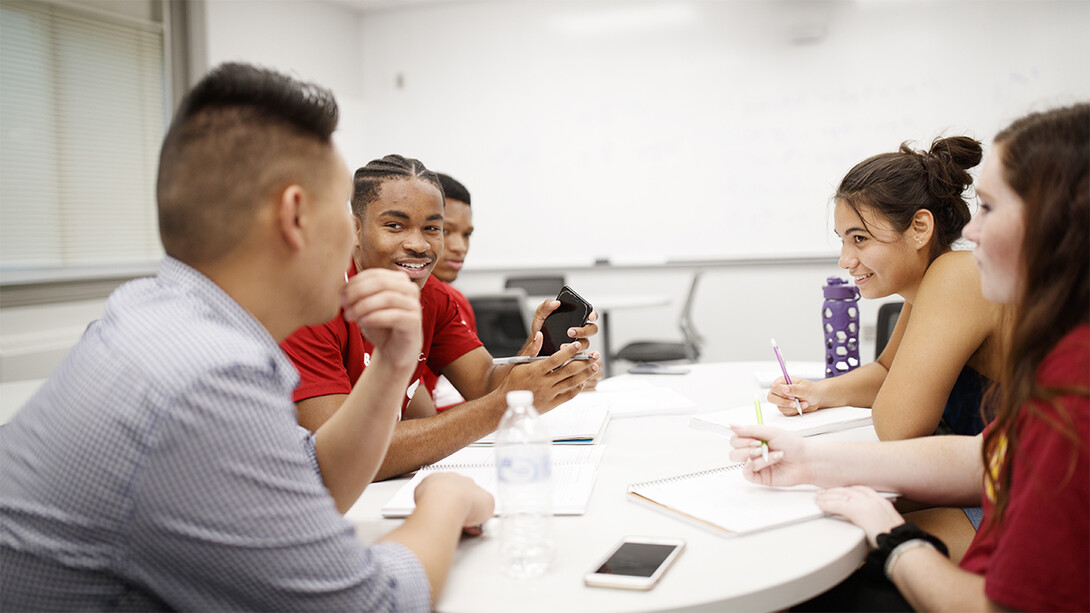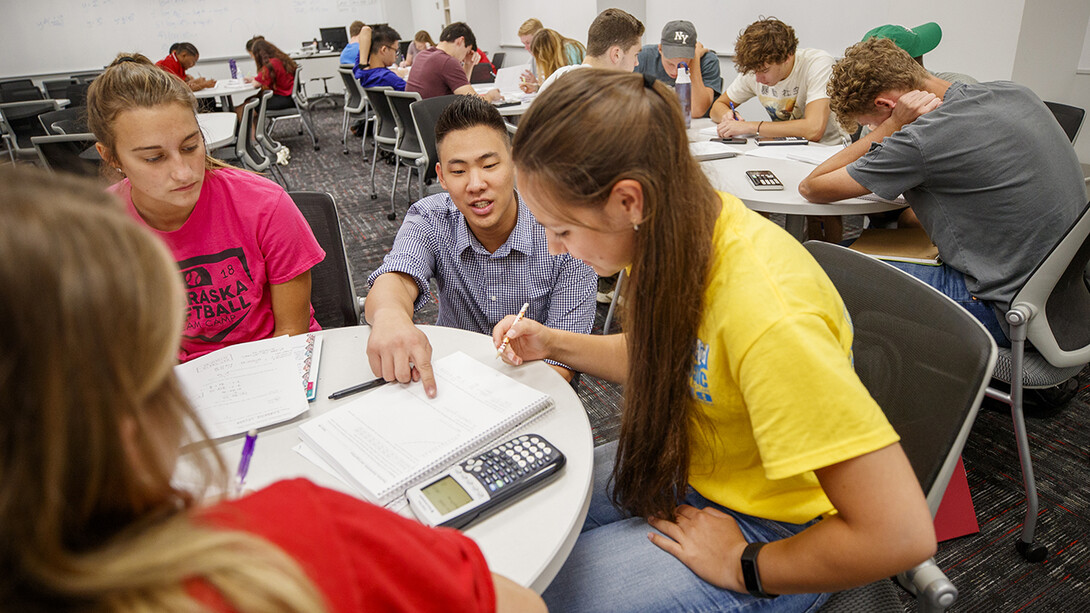
Active learning is transforming calculus at universities nationwide — and the University of Nebraska–Lincoln is helping to lead the movement.
Active-learning strategies encourage the student-led questioning, reasoning and communication of key mathematical concepts, with instructors promoting engagement and building on student thinking.
Since 2016, Nebraska’s Department of Mathematics has expanded its implementation of active-learning strategies from precalculus courses into Calculus I, Calculus II and business calculus. Moreover, a team of educators, led by Wendy Smith of the Center for Science, Mathematics and Computer Education, is part of a National Science Foundation-funded effort to support nine other universities in making similar changes.
“It is well established in the literature that active learning improves student learning and therefore grades. It reduces failure rates by a third,” said Allan Donsig, chair of the first-year math task force, a faculty committee in mathematics that led the changes to precalculus and, more recently, to calculus.
The department also mirrored the active-learning setup of its precalculus classrooms by adding movable tables and chairs into five classrooms in Louise Pound Hall for calculus recitations in fall 2018.
Student success in undergraduate calculus is growing alongside the number of classrooms that incorporate active learning. The department measures student success as the percentage of students earning a grade of C or better. By that metric, the success rate of Calculus I has risen from 62% to more than 75%, said Wendy Smith, associate director of the Center for Science, Mathematics and Computer Education. The success rate in Calculus II, meanwhile, has approached 80%.
“Implementing active learning requires many changes: suitable online homework, professional development for recitation leaders, coordination of instructors, classrooms that support active learning, and so on,” Donsig said. “We have benefited from a dedicated team of people, including math educators, faculty and graduate student instructors.”
Alongside the University of Colorado Boulder, San Diego State University and the Association of Public and Land-grant Institutions, Nebraska has entered the second phase of the five-year, $3 million NSF project. That second phase involves sharing what worked in the first phase with nine other universities now looking to incorporate active learning into their own calculus instruction. Project leaders have already visited each of the nine additional institutions and are now analyzing data.
“We’re actively supporting them in enacting transformational changes to their departments,” Smith said. “In 2020, we will go back to see what changes they’ve managed to make.
“As we share the lessons we’ve learned from our first phase to help these institutions accelerate transformative changes, we’ve also been helping them form a networked improvement community with each other, knowing that when you are working on similar problems, you can accelerate your own improvement by collaborating strategically.”
Nebraska’s own active-learning efforts began in 2012 with a task force that focused on Math 100A through Math 103. Student-success rates in those courses rose from about 65% to 80%.

“At other campuses, they’ve had similar successes, or they already had high success rates,” she said. “But they’ve doubled the enrollment in a subsequent course — such as doubling enrollment in Calculus II after Calculus I — while keeping the same success rate.”
Freshmen retention rates correlate strongly with math grades. At Nebraska, roughly two-thirds of freshmen take a math course in their first semester.
Depending on the type of institution, one-quarter to half of U.S. college students will fail their first math course, Smith said. Negative experiences in a math course lead about 50 percent of students to switch from a major in science, technology, engineering or math after their freshman year.
Implementing and sustaining positive changes will require math departments to adopt a culture that values teaching and student success, Smith said.
“If you’re trying to correlate freshman retention with course-taking, it’s going to correlate with math,” Smith said. “Nebraska does not want a student’s experience of failing their first math class to be something that derails their college plans or future STEM careers.”







